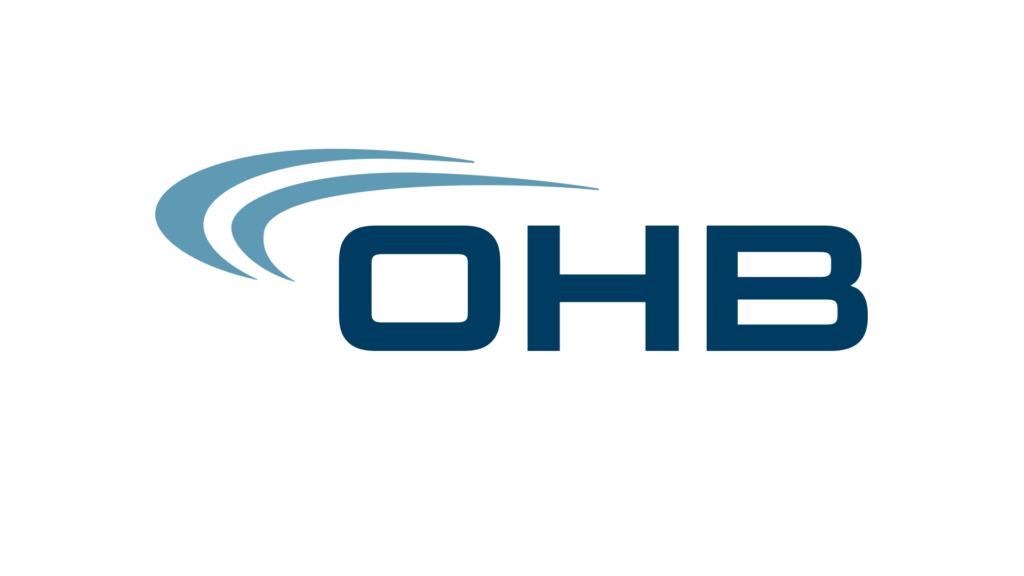As the job market continues to evolve, retaining top talent has become a pressing challenge for organizations worldwide. The cost of losing skilled employees extends beyond recruitment expenses, impacting productivity, morale, and innovation. In this landscape, effective employee retention strategies are not merely advantageous—they are crucial for sustaining growth and maintaining a competitive edge. This article delves into actionable strategies that can help you reduce turnover, enhance workplace satisfaction, and ultimately secure your organization’s most valuable asset: its people.
Why Employee Retention Matters in 2025
Employee retention strategies are systematic approaches organizations implement to keep valuable employees engaged, motivated, and committed to staying with the company long-term. In 2025’s tight labor market, where skilled professionals have numerous options, retention has become a top priority for businesses of all sizes.
The cost of losing an employee extends far beyond the obvious recruitment expenses. Studies show that replacing an employee can cost anywhere from 50% to 200% of their annual salary when you factor in lost productivity, knowledge drain, and onboarding time. Beyond these direct costs, high turnover rates can damage team morale, disrupt customer relationships, and hinder innovation.
Organizations with strong employee retention strategies enjoy numerous benefits:
- Increased productivity and performance
- Stronger team cohesion and institutional knowledge
- Enhanced customer satisfaction
- Lower operational costs
- Improved company culture and employee morale
Let’s explore the most effective strategies that leading companies are implementing to keep their talent engaged and committed.
1. Create a Comprehensive Onboarding Experience

The employee retention journey begins before a new hire even starts work. A structured, thoughtful onboarding process sets the tone for the entire employee experience.
Employees who experience a strong onboarding process are 69% more likely to remain with the company for three years.
Research shows that companies with effective onboarding programs experience 50% greater new-hire productivity and 54% higher employee engagement. Yet surprisingly, only 12% of employees feel their organization does a good job with onboarding.
To create an effective onboarding experience:
- Start before day one with welcome communications and necessary paperwork
- Create a structured first-week plan that balances administrative tasks with meaningful work
- Assign a mentor or buddy to help navigate company culture
- Schedule regular check-ins during the first 90 days
- Gather feedback to continuously improve the process
Remember that onboarding isn’t a one-day event—it’s a process that should extend through the employee’s first year to ensure they feel supported, connected, and equipped to succeed.
2. Offer Competitive Compensation and Benefits
While money isn’t everything, it remains a fundamental factor in employee retention. Companies must regularly benchmark their compensation packages against industry standards to remain competitive.
In 2025, competitive compensation goes beyond base salary to include:
| Component | Traditional Approach | Modern Approach |
|---|---|---|
| Base Salary | Market rate | Above-market for key roles |
| Bonuses | Annual performance-based | Spot bonuses, project completion incentives |
| Benefits | Standard health insurance | Comprehensive wellness programs, mental health support |
| Retirement | Basic 401(k) match | Enhanced retirement planning, financial wellness |
| Time Off | Standard PTO | Unlimited PTO, sabbaticals, volunteer days |
The key is to create a total rewards package that addresses diverse employee needs and preferences. This might include flexible spending accounts, student loan assistance, or childcare subsidies depending on your workforce demographics.
Regular compensation reviews are essential. Don’t wait for employees to come asking for raises—be proactive in adjusting compensation to reflect increased responsibilities or improved performance.
3. Prioritize Work-Life Balance
In 2025, work-life balance has evolved from a perk to an expectation. Organizations that fail to respect employees’ personal time face higher turnover rates.
Effective work-life balance strategies include:
- Flexible scheduling options
- Remote or hybrid work arrangements
- Clear boundaries around after-hours communications
- Generous paid time off policies
- Parental leave and family support programs
- Wellness initiatives and stress management resources
One innovative approach gaining traction is creating opportunities for meaningful social connections among colleagues. Neroia, a company offering a social employee benefits platform, has pioneered this approach by fostering organic connections between coworkers through AI-driven recommendations of small-group activities tailored to individual interests and schedules.
The most successful organizations recognize that work-life balance looks different for each employee. Providing options and trusting employees to manage their time effectively demonstrates respect and fosters loyalty.
4. Invest in Professional Development
Career stagnation is a leading cause of employee departures. When professionals feel they’ve stopped growing, they start looking elsewhere.
94% of employees would stay at a company longer if it invested in their career development.
Effective professional development strategies include:
- Creating clear career pathways with defined progression opportunities
- Offering regular skills training and educational stipends
- Supporting professional certification programs
- Providing cross-functional project opportunities
- Implementing mentorship and coaching programs
The most successful development programs align individual growth goals with organizational needs. This creates a win-win where employees gain valuable skills while the company builds bench strength in critical areas.
Consider implementing individual development plans (IDPs) that are reviewed quarterly. These plans should include both short-term skill building and long-term career aspirations.
5. Foster a Positive Company Culture
Company culture has emerged as a critical factor in employee retention. A toxic workplace will drive away even the most dedicated employees, while a positive culture can inspire loyalty even through challenging times.
Elements of a retention-focused culture include:
- Psychological safety where employees feel comfortable speaking up
- Transparency in communication and decision-making
- Recognition of achievements both large and small
- Inclusive practices that value diversity of thought and background
- Opportunities for meaningful social connections
Building genuine connections between colleagues has proven particularly important in hybrid and remote work environments. Companies like Neroia are addressing this need by creating platforms that facilitate authentic interactions through shared activities and interests, helping combat the isolation that can lead to disengagement.
Culture isn’t created through mission statements—it’s built through consistent actions and behaviors, particularly from leadership. When executives model the values they espouse, employees take notice and trust in the organization grows.
6. Implement Recognition and Reward Systems
Employees who feel appreciated are significantly more likely to remain with their organizations. Yet many companies underinvest in recognition programs.
Effective recognition strategies:
- Provide both formal and informal recognition opportunities
- Recognize effort and progress, not just outcomes
- Offer peer-to-peer recognition options
- Align rewards with company values
- Personalize recognition to individual preferences
| Recognition Type | Examples | Impact |
|---|---|---|
| Verbal praise | Public acknowledgment, team shout-outs | Immediate morale boost |
| Written recognition | Thank-you notes, digital badges | Creates lasting record |
| Tangible rewards | Gift cards, experiences, bonuses | Reinforces value |
| Career opportunities | Special projects, development | Long-term engagement |
The most effective recognition programs are timely, specific, and authentic. Generic “employee of the month” programs often fall flat compared to spontaneous, heartfelt appreciation tied to specific contributions.
7. Provide Regular Feedback and Performance Reviews

Annual performance reviews are no longer sufficient. Today’s employees expect ongoing feedback and coaching to help them grow and improve.
Best practices for feedback include:
- Scheduling regular one-on-one meetings between managers and direct reports
- Training managers in effective feedback techniques
- Implementing 360-degree feedback processes
- Using performance management software to track goals and progress
- Separating development conversations from compensation discussions
Employees who receive daily feedback from their manager are 3 times more likely to be engaged than those who receive feedback once a year.
The most effective feedback is specific, timely, and balanced between recognition and constructive guidance. Managers should focus on observable behaviors rather than making assumptions about intentions or personality traits.
8. Create Opportunities for Meaningful Social Connections
Human connection is a fundamental need that directly impacts employee satisfaction and retention. This has become especially important in the era of remote and hybrid work.
Strategies for fostering workplace connections include:
- Team-building activities that go beyond forced fun
- Interest-based groups and clubs
- Mentorship and buddy programs
- Collaborative projects across departments
- Community service initiatives
Organizations are increasingly recognizing the value of facilitating authentic connections between colleagues. For example, Neroia’s platform uses AI to recommend small-group activities tailored to individual interests and schedules, making it easier for employees to connect over shared passions without the friction of planning.
These connections create a social fabric that makes leaving an organization more difficult, as employees are reluctant to leave behind meaningful relationships.
9. Listen to Employee Feedback
Organizations that actively solicit and act on employee feedback demonstrate that they value their people’s perspectives and experiences.
Effective feedback collection methods include:
- Regular pulse surveys
- Stay interviews (before employees consider leaving)
- Employee resource groups
- Town halls and open forums
- Anonymous suggestion systems
The key is not just collecting feedback but closing the loop by acknowledging what was heard, sharing what actions will be taken, and explaining why certain suggestions won’t be implemented.
Organizations with the highest retention rates make feedback a continuous conversation rather than an occasional event. They create psychological safety that encourages honest input without fear of repercussions.
10. Support Employee Wellbeing
Employee wellbeing has emerged as a critical factor in retention, particularly as awareness of burnout and mental health challenges has increased.
Comprehensive wellbeing programs address:
- Physical health (fitness programs, ergonomic workspaces)
- Mental health (counseling services, stress management)
- Financial wellbeing (planning resources, emergency funds)
- Social connection (team activities, support networks)
- Purpose and meaning (connecting work to impact)
76% of employees believe their company should be doing more to protect their mental health.
The most effective wellbeing initiatives are integrated into the daily employee experience rather than treated as separate programs. They’re also personalized to meet diverse needs rather than taking a one-size-fits-all approach.
Measuring the Impact of Your Retention Strategies
Implementing retention strategies without measuring their effectiveness is like navigating without a compass. Key metrics to track include:
- Overall turnover rate
- Voluntary vs. involuntary turnover
- Turnover by department, manager, and demographic groups
- Average tenure
- Cost of turnover
- Employee satisfaction and engagement scores
- Participation in development and wellbeing programs
These metrics should be reviewed regularly and used to refine your retention approach. Remember that some strategies may take time to show results, so look for leading indicators (like improved engagement scores) before expecting to see changes in lagging indicators (like turnover rates).
Conclusion: Building a Retention-Focused Organization
Employee retention strategies aren’t just HR initiatives—they’re business imperatives that require commitment from every level of the organization. The most successful companies integrate retention thinking into all aspects of the employee experience, from recruitment through retirement.
As workplaces continue to evolve, organizations must adapt their retention approaches to meet changing employee expectations. This includes embracing technology solutions that enhance connection and engagement. Platforms like Neroia are at the forefront of this evolution, helping companies foster the authentic relationships that make employees want to stay.
By implementing the strategies outlined in this article, you’ll be well on your way to creating a workplace where talented professionals choose to build their careers rather than just pass through. The investment in retention pays dividends in productivity, innovation, and organizational success.
Remember that retention isn’t about trapping employees—it’s about creating an environment so compelling that they actively choose to stay. When you achieve that, you’ll have built a truly sustainable competitive advantage.




